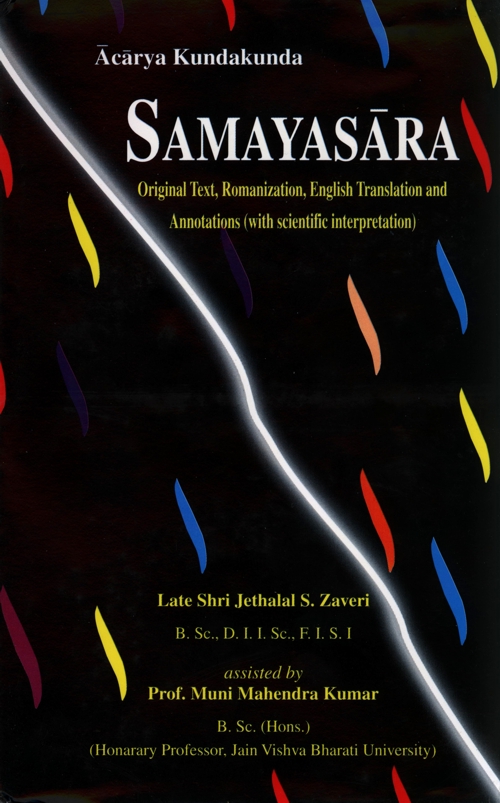
bhuñjjaṃtassa vi vivihe saccittācittamissie davve.
saṃkhassa sedabhāvo ṇa vi sakkadi kiṇhago kāduṃ..28

taha ṇāṇissa du vivihe saccittācittamissie davve.
bhuñjjaṃtassa vi ṇāṇaṃ ṇa sakkamaṇṇāṇadaṃ ṇeduṃ..29

jaiyā sa eva saṃkho sedasahāvaṃ sayaṃ pajahidūṇa.
gacchejja kiṇhabhāvaṃ taiyā sukkattaṇaṃ pajahe..30

taha ṇāṇῑ vi hu jaiyā ṇāṇasahāvaṃ sayaṃ pajahidūṇa.
aṇṇāṇeṇa pariṇado taiyā aṇṇāṇadaṃ gacche..31
(Bhuṃjaṃtassa vi vivihe saccittāccittamissie davve) Intake/ consumption of various, animate, inanimate and combined objects (saṃkhassa sedabhāvo kiṇhago kāduṃ ṇa vi sakkadi) by a conch [a large gastropod-shell fish] is unable to blacken the intrinsic whiteness of its spiral shell.
(Taha) Much in the same way (vivihe saccittāccittamissie davve bhuṃjaṃtassa vi ṇāṇῑssa du ṇāṇaṃ anṇāṇadaṃ ṇeduṃ ṇa sakkaṃ) enjoyment of various animate, inanimate and mixed objects of worldly pleasures by an enlightened sage does not [is unable to] pervert his right knowledge.
(Jaiyā) Just as when (sa eva saṃkho) the self-same conch (sedasahāvaṃ sayaṃ paṃjahidūna) itself abandons the intrinsic whiteness (kiṇhabhāvaṃ gacchejja) and assumes blackness (taiyā sukkattaṇaṃ pajahe) then and only then it ceases to be white.
(Taha) Much in the same way (ṇāṇῑ vi jaiyā hu ṇāṇasahāvaṃ sayaṃ pajahidūṇa) only if a sage, himself, abandons his right knowledge (aṇṇāṇeṇa pariṇado) and indulges in perversion (taiyā aṇṇāṇadaṃ gacche) then and only then his knowledge becomes perverted.
Annotations:
In these verses, the author makes use of another analogy to illustrate the rule that the soul itself is the sole determinant of its state of purification or corruption. Here the analogy is that of a conch which is famous for its intrinsic whiteness. Conch is the spiral shell of a large gastropod (shell-fish) and is used for ceremonial purposes in temples. It is stated in the analogy that the gastropod habitually takes in a large variety of animate (sea-creatures), inanimate and mixed objects as food during its life time, but its shell does not lose its famous shining whiteness. That is the variety of external objects has no effect on the intrinsic whiteness of the conch. Much in the same way, an enlightened sage, during his lifetime, enjoys all sorts of animate, inanimate and mixed objects, but none of them has any adverse effect on the inherent inalienable quality of the soul, that is, the right knowledge (Jñāna) of the enlightened sage is not blackened to perverted knowledge (Ajñāna). Again, in the case of the conch the blackness may tarnish the whiteness due to some internal biological action. Similarly, the knowledge of an enlightened sage may be transformed into perverted one due to the loss of the soul's own internal purified state. The gist is—the knowledge will be right and pure as long as the soul remains pure, and it becomes perverted by the impurity of the soul itself. The external objects have no potency to convert the intrinsic quality of the soul.
 Jethalal S. Zaveri
Jethalal S. Zaveri
 Prof. Muni Mahendra Kumar
Prof. Muni Mahendra Kumar

